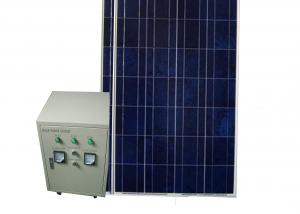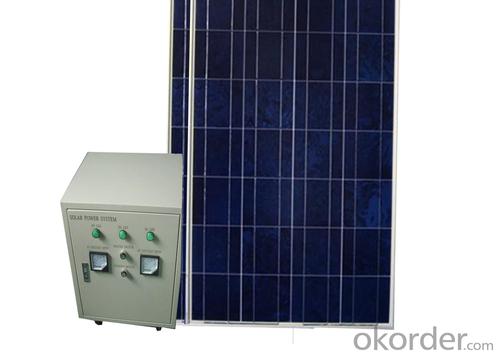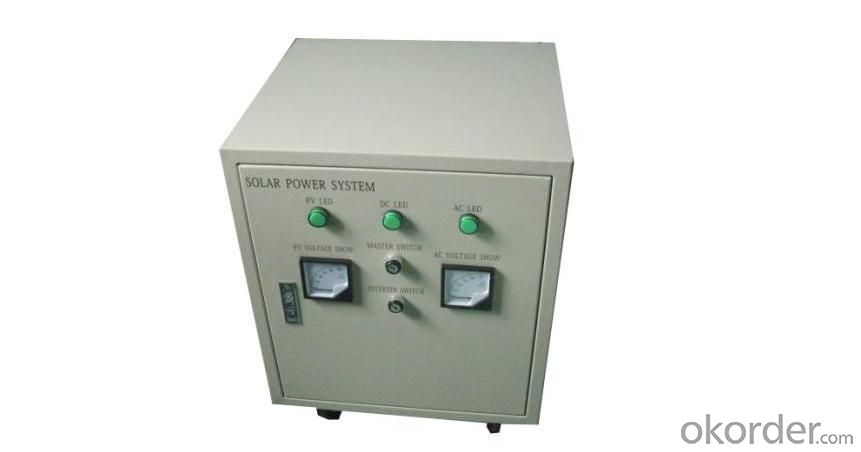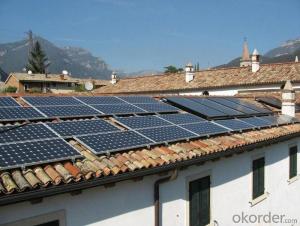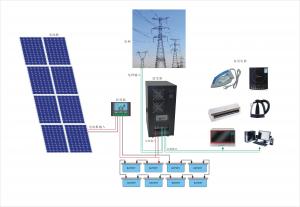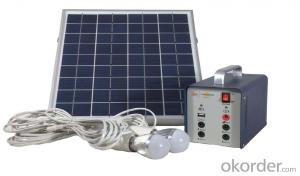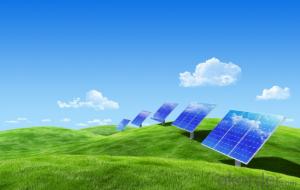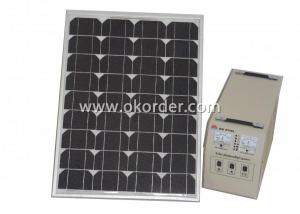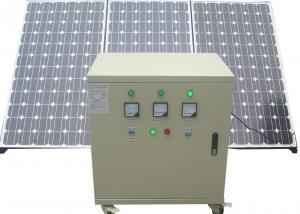Sunlight Solar Energy Systems CNBM-K4 (300W) Solar Home System
- Loading Port:
- China Main Port
- Payment Terms:
- TT or L/C
- Min Order Qty:
- 1 set set
- Supply Capability:
- 1000 sets per month set/month
OKorder Service Pledge
OKorder Financial Service
You Might Also Like
Brief Introduction of Solar Energy System CNBM-K4 (300W)
CNBM Home System-K4 (300W) has a wonderful capacity.It can be used in factory,home,school and other CNBM Home System-K4 (300W) consist of the solar modules,charge controller,inverter and battery banks.
CNBM International is highly recognized by its business partners and clients all over the world and has obtained rapid development under the spirit of win-win .
With CNBM Home System-K4 (300W),
We will carry on the mutual beneficial,innovative and revolutionary trading structure as we did before,create value for our employees,share holders and clients and benefit the whole society in our future development.Please contact us ,if you have interest in CNBM Home System-K4 (300W),don’t hesitate!
The Sketching of Solar Energy System CNBM-K4 (300W)
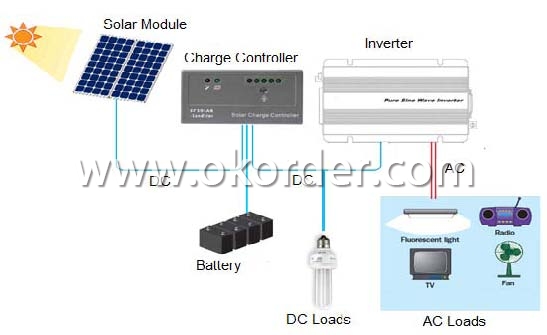
Components of Solar Energy System CNBM-K4 (300W)
PV Array:
Convert sunlight instantly into DC electric power. Formed by the solar modules (also called photovoltaic modules) in accordance with the system requirements for series and parallel.
Solar Charge Controller:
A charge controller may be used to power DC equipment with solar panels. The charge controller provides a regulated DC output and stores excess energy in a battery as well as monitoring the battery voltage to prevent over charge or over discharge. An inverter can be connected to the output of a charge controller to drive AC loads.
Inverter:
Converts DC output power of photovaltaic soalr panels into standard AC power for use in the local off-grid electrical network. It is a critical component in a photovoltaic system, allowing the use of ordinary commercial appliances.
Battery banks:
Stores energy when there is an excess coming in and distribute it back out when there is a demand. Solar PV panels continue to re-charge batteries each day to maintain battery charge.
Technical data of Solar Home System CNBM-K4 (300W) | ||
Inverter | Rated load power | 1000W |
Output wave | Pure sine wave | |
Output voltage | DC 24V | |
Output frequency | DC:12V AC:220V | |
Precision of output | 50HZ/60HZ | |
Precision of output frequency | ±6% | |
Solar panel | Pmax | 150W*2PCS |
Vmp | 18V*2 | |
Imp | 8.34A | |
Charger | Charger voltage & current | 24V 20A |
Battery | Capacity | 12V 80AH*2PCS |
Power box | Spray paint iron box,with input,output,ammeter,voltmeter,master swith and so on. | |
Package of Solar Home System CNBM-K4 (300W) | ||||
Part | Size(L*W*H mm) | Weight(kg) | 20’(pcs) | 40’(pcs) |
Power box | 580*520*540 | 60 | 84 Sets | 200 Sets |
Solar panel | 1500*700*90 | 24 | ||
Battery | 270*340*220 | 50 | ||
Factory Picture of Solar Energy System CNBM-K4 (300W)
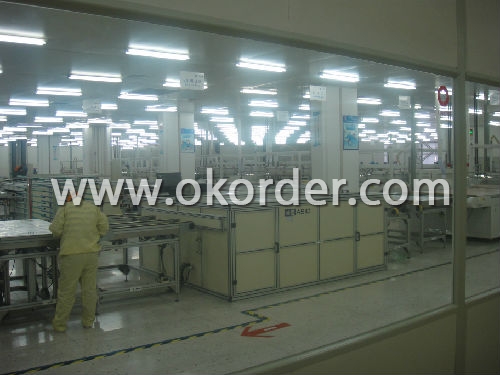
Package Picture of Solar Energy System CNBM-K4 (300W)
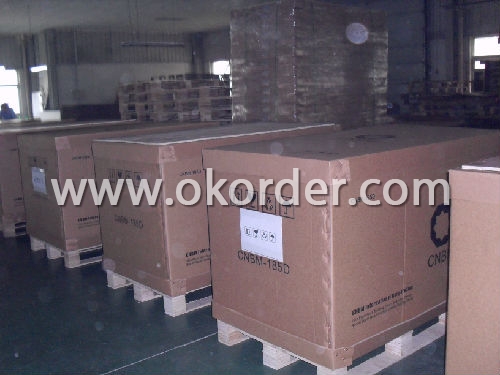
- Q: Can solar energy systems be used in areas with limited access to emergency services?
- Yes, solar energy systems can be used in areas with limited access to emergency services. Solar energy systems are independent power sources that can provide electricity even in remote locations. They do not require a connection to the grid or rely on emergency services for operation. This makes them suitable for areas with limited access to emergency services, as they can provide reliable and sustainable power without being reliant on external infrastructure.
- Q: How do solar energy systems affect the resale value of a home?
- Solar energy systems can have a positive impact on the resale value of a home. Studies have shown that homes equipped with solar panels tend to sell faster and at a higher price compared to homes without them. This is because solar energy systems offer numerous benefits, such as reduced energy costs, potential tax incentives, and a smaller environmental footprint. Additionally, as renewable energy becomes increasingly popular, homes with solar panels are often seen as more desirable to buyers, making them a valuable investment.
- Q: Can solar energy systems be used in commercial agriculture?
- Yes, solar energy systems can be used in commercial agriculture. They can provide a sustainable and cost-effective solution for powering various agricultural operations such as irrigation systems, greenhouse heating, and livestock facilities. Solar panels can be installed on rooftops or as ground-mounted systems in farms to harness the sun's energy and generate electricity for on-site use. This helps reduce reliance on traditional energy sources, lowers operational costs, and promotes environmentally friendly practices in commercial agriculture.
- Q: What is the impact of dust storms on solar panel efficiency?
- Dust storms have a significant impact on solar panel efficiency as they can reduce the amount of sunlight reaching the panels and hinder their ability to generate electricity. The accumulation of dust particles on the surface of the panels creates a barrier that blocks sunlight, reducing the amount of energy that can be converted into electricity. This leads to a decrease in overall energy output, affecting the efficiency and performance of the solar panels. Regular cleaning and maintenance of the panels are necessary to mitigate the negative impact of dust storms and ensure optimal efficiency.
- Q: How does a solar panel convert sunlight into electricity?
- A solar panel converts sunlight into electricity through the photovoltaic effect. When sunlight hits the solar panel, it excites the electrons in the semiconductor material, creating a flow of electric current. This current is then collected and used as electricity.
- Q: How does the efficiency of solar panels vary across different roof types?
- The efficiency of solar panels can vary across different roof types due to factors such as the angle and orientation of the roof, shading from surrounding trees or buildings, and the presence of any obstructions or obstacles. A roof with a steep angle and south-facing orientation tends to be more efficient for solar panels as it receives maximum sunlight throughout the day. Additionally, a roof with minimal shading and obstruction allows for better sunlight exposure, resulting in higher efficiency. However, roofs with flat angles, north-facing orientation, or significant shading may experience decreased efficiency as they receive less direct sunlight. Ultimately, the efficiency of solar panels on different roof types depends on these factors and can vary accordingly.
- Q: Are solar energy systems suitable for residential use?
- Yes, solar energy systems are suitable for residential use. They can provide clean and renewable energy, reduce electricity bills, and contribute to overall environmental sustainability. With advancements in technology and decreasing costs, solar panels have become more affordable and efficient, making them a viable option for homeowners looking to generate their own electricity and reduce their carbon footprint.
- Q: Can solar energy systems be used in urban environments?
- Yes, solar energy systems can definitely be used in urban environments. In fact, urban areas can be ideal for solar energy due to the high population density and availability of rooftop spaces. Solar panels can be installed on buildings, homes, and other structures in cities to harness the power of the sun and provide clean and renewable energy. Additionally, advancements in solar technology have made it possible to integrate solar panels into various urban infrastructure, such as streetlights and bus stops, further expanding the use of solar energy in urban environments.
- Q: Can solar energy systems be used in rural areas?
- Solar energy systems are definitely applicable in rural areas. Rural areas, in fact, are well-suited for solar power due to its decentralization and independence from the electrical grid. In rural areas, access to reliable and affordable electricity is often lacking, which makes solar energy an attractive choice. Solar panels can be installed on rooftops or open land, providing a sustainable and renewable energy source. Additionally, solar energy systems can be combined with energy storage solutions, like batteries, to ensure a continuous power supply even during periods of low sunlight. This is especially advantageous for rural areas that frequently experience power outages or have limited access to the electrical grid. Furthermore, solar energy systems require minimal maintenance, making them suitable for remote locations where regular maintenance services may not be readily available. In conclusion, solar energy is a viable and increasingly popular solution for powering rural areas, offering numerous benefits including reduced dependence on fossil fuels, cost savings, and environmental sustainability.
- Q: Are solar energy systems expensive?
- Solar energy systems can be initially expensive to install, but they provide long-term cost savings and are becoming more affordable over time.
Send your message to us
Sunlight Solar Energy Systems CNBM-K4 (300W) Solar Home System
- Loading Port:
- China Main Port
- Payment Terms:
- TT or L/C
- Min Order Qty:
- 1 set set
- Supply Capability:
- 1000 sets per month set/month
OKorder Service Pledge
OKorder Financial Service
Similar products
Hot products
Hot Searches
Related keywords
